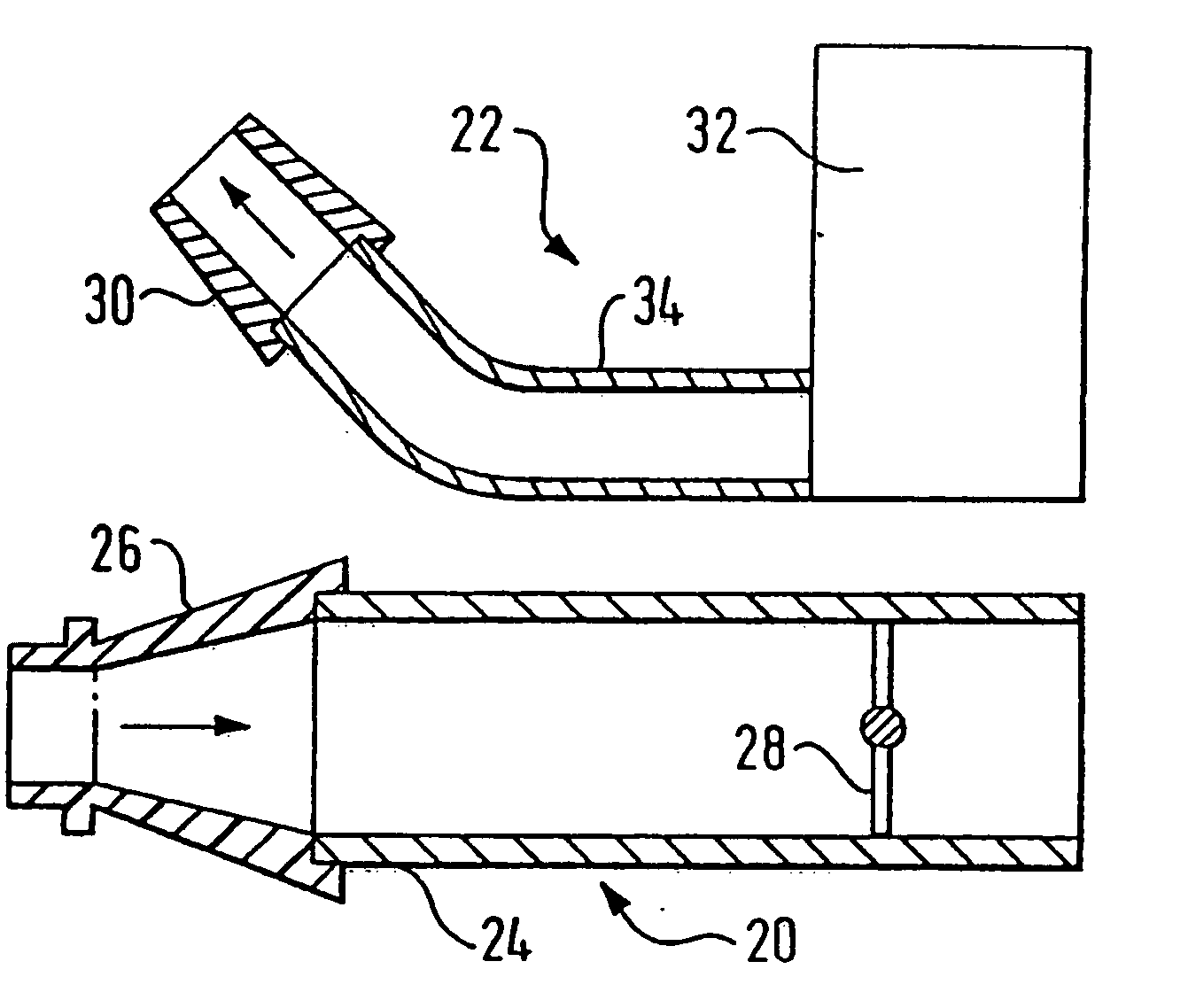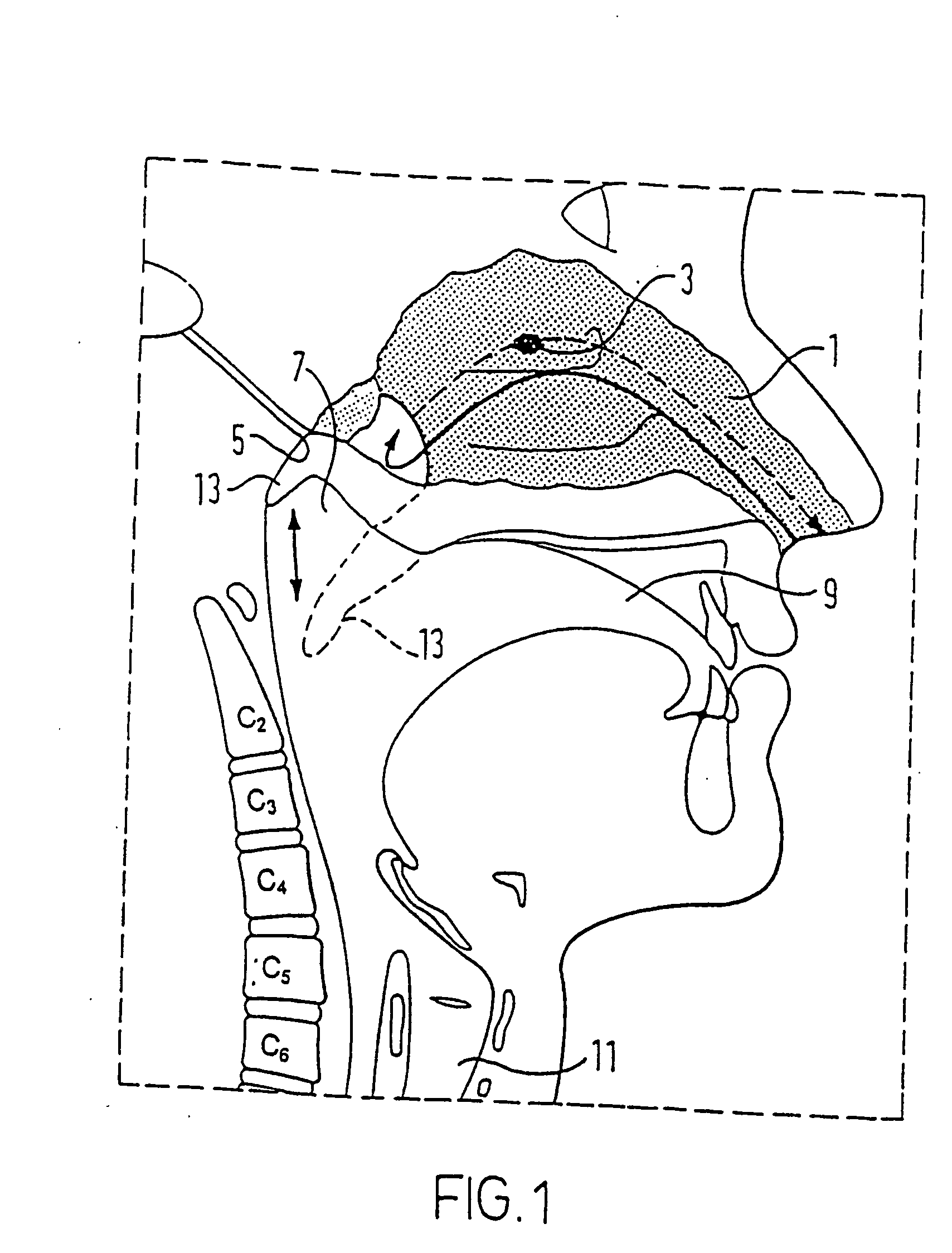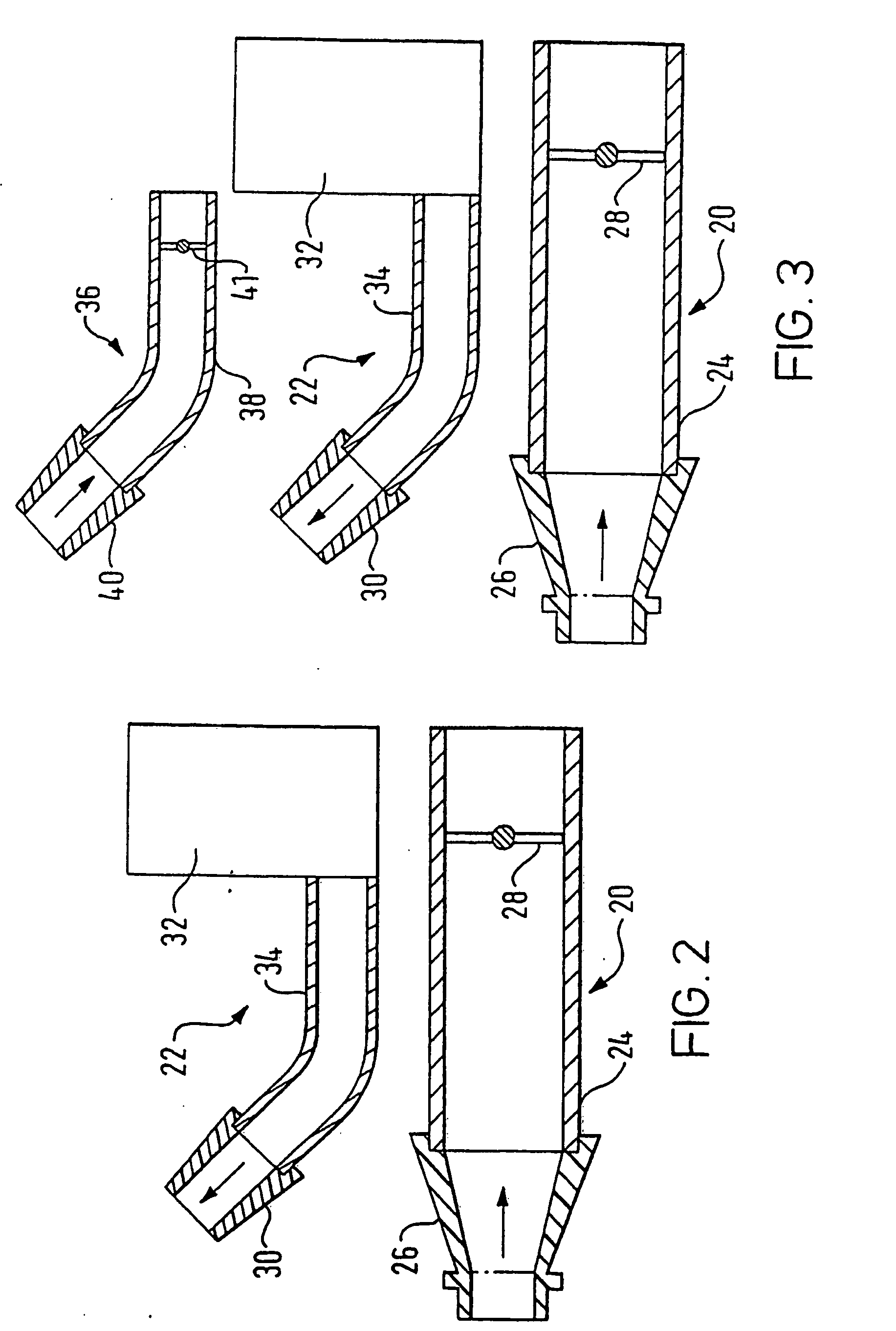Nasal delivery device
a delivery device and nasal airway technology, applied in the direction of infusion syringes, respirators, transportation and packaging, etc., can solve the problems of less than ideal distribution of the delivered substance, in particular to the posterior region of the nasal airway, and the incidence of such allergic and non-allergic inflammatory diseases, so as to improve the ventilation of the sinuses and improve the deposition of substances. , the effect of improving the deposition
- Summary
- Abstract
- Description
- Claims
- Application Information
AI Technical Summary
Benefits of technology
Problems solved by technology
Method used
Image
Examples
first embodiment
[0086]FIG. 2 illustrates a delivery device in accordance with the present invention.
[0087] The delivery device comprises an oral exhalation unit 20 and a substance delivery unit 22. In this embodiment the oral exhalation unit 20 and the delivery unit 22 are provided as separate components, but alternatively could be detachably coupled, for example by means of Velcro™ fasteners, connected, for example by means of screws and / or rivets, or even integrally formed.
[0088] The oral exhalation unit 20 comprises a tubular section 24 and a mouthpiece 26 attached to one end of the tubular section 24. The mouthpiece 26, which in use is gripped in the lips of a user, is formed separately of the tubular section 24 to allow for replacement, but could alternatively be integrally formed. In this embodiment the mouthpiece 26 is a snap fit on the tubular section 24, but could equally be a screw fit. The tubular section 24 includes a flow resistor 28, in this embodiment a fixed baffle plate, configure...
second embodiment
[0092]FIG. 3 illustrates a delivery device in accordance with the present invention.
[0093] The delivery device comprises the oral exhalation unit 20 and the delivery unit 22 of the above-described first embodiment, and an outlet unit 36 for fitting to the other nostril of a subject to which the delivery unit 22 is fitted.
[0094] The outlet unit 36 comprises a tubular section 38 and a nosepiece 40, in this embodiment formed of a resilient material such as a polymeric material, attached to one end of the tubular section 38 for providing a tight sealing fit in the other nostril of the subject. The nosepiece 40 is formed separately of the tubular section 38 to allow for replacement, but could alternatively be integrally formed. In this embodiment the nosepiece 40 is a snap fit on the tubular section 38, but could equally be a screw fit. As with the nosepiece 30 of the delivery unit 22, in a preferred embodiment the nosepiece 40 can include an external olive or be shaped to cause the ant...
third embodiment
[0097]FIG. 4 illustrates a delivery device in accordance with the present invention.
[0098] The delivery device is very similar to that of the delivery device of the above-described second embodiment, and thus, in order to avoid unnecessary duplication of description, only the differences will be described in detail, with like parts being designated by like reference signs. This delivery device differs only in further comprising a pressure sensor 43, in this embodiment a pressure-sensitive spring or membrane, located in the tubular section 34 of the delivery unit 22 downstream of the medicament supply unit 32, and a control unit 44 coupled to the sensor 43 and the medicament supply unit 32.
[0099] The control unit 44 is configured to control the flow rate of the delivery gas supplied by the medicament supply unit 32 in order to optimize the particle deposition efficiency in the nasal airway regardless of the degree of nasal congestion. As mentioned hereinabove, by maintaining an opti...
PUM
 Login to View More
Login to View More Abstract
Description
Claims
Application Information
 Login to View More
Login to View More - R&D
- Intellectual Property
- Life Sciences
- Materials
- Tech Scout
- Unparalleled Data Quality
- Higher Quality Content
- 60% Fewer Hallucinations
Browse by: Latest US Patents, China's latest patents, Technical Efficacy Thesaurus, Application Domain, Technology Topic, Popular Technical Reports.
© 2025 PatSnap. All rights reserved.Legal|Privacy policy|Modern Slavery Act Transparency Statement|Sitemap|About US| Contact US: help@patsnap.com



